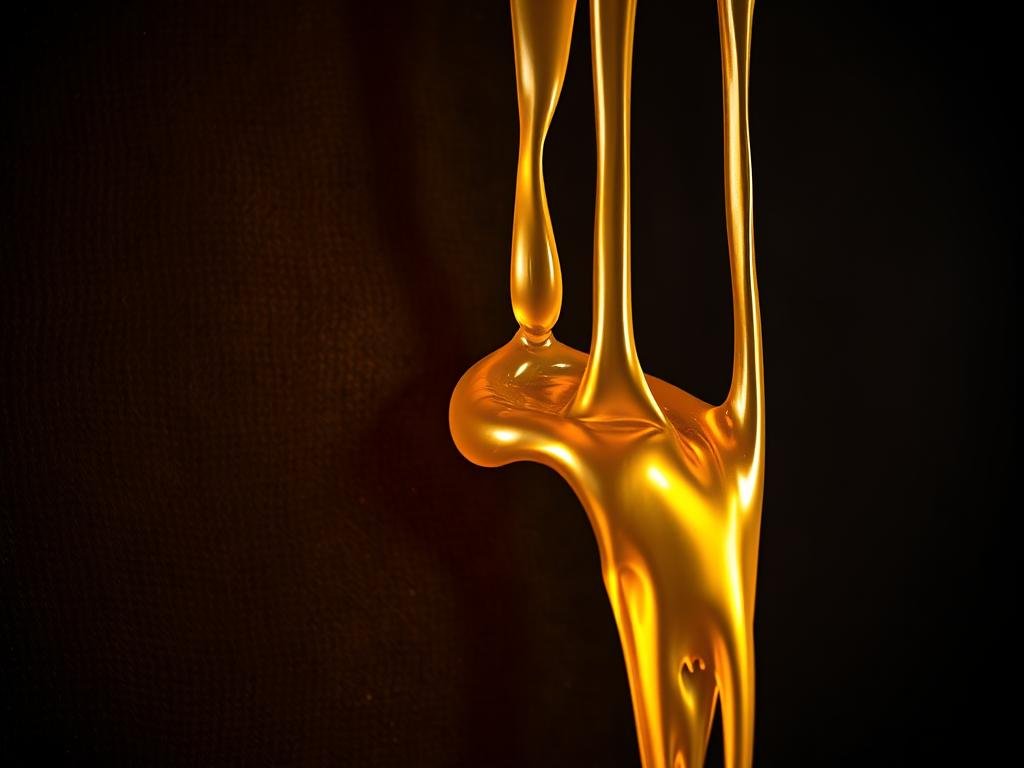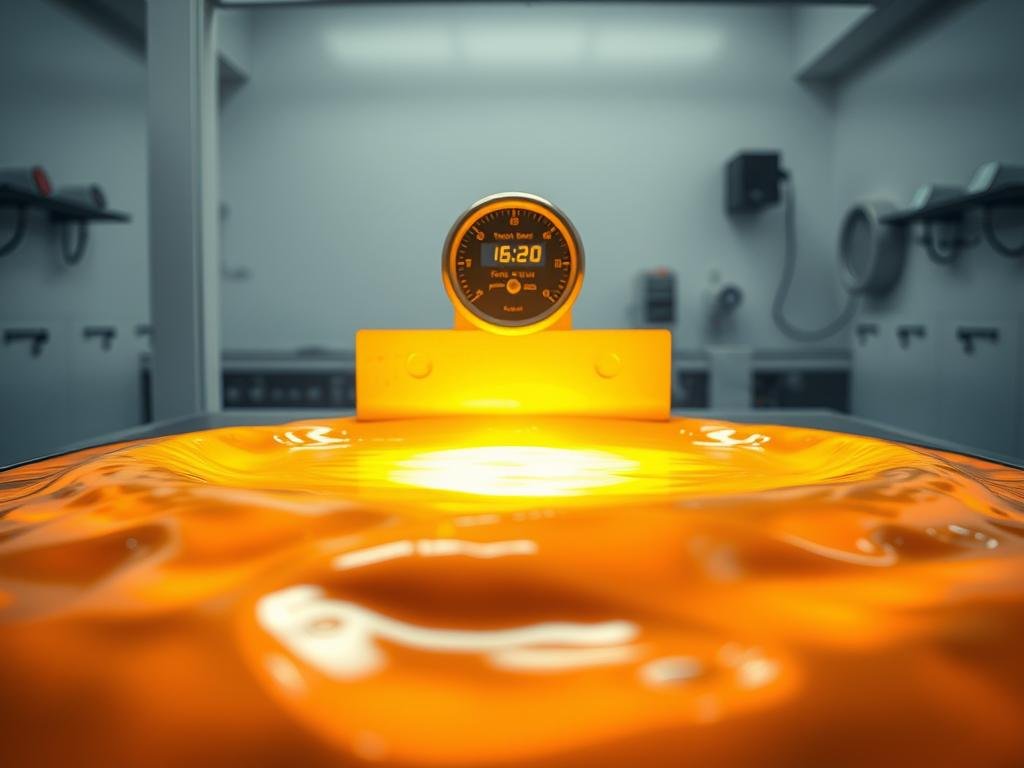Understanding the melting point of gold is essential for professionals in the jewelry and refining industries. Pure gold melts at 1,064 degrees Celsius (1,947 degrees Fahrenheit), a temperature that significantly influences its applications and workability.
This high temperature makes gold one of the more stable precious metals, though its melting point is lower than that of metals like platinum or palladium. The melting point affects not only gold’s durability and uses in decorative and industrial contexts but also its purity assessment and verification methods.
Throughout this article, we will explore the significance of gold’s melting point, its comparison with other metals, and the importance of precise temperature control when working with gold. By understanding these fundamental properties, professionals can better handle and apply gold in various settings.
Understanding Gold’s Melting Point
Understanding the melting behavior of gold is essential for professionals in the field, as it directly impacts the processing, application, and quality of gold products. Gold’s melting point is a critical property that determines its usability in various contexts.
The Science Behind Gold’s Melting Temperature
Gold’s high melting point of 1,064°C is attributed to its atomic structure and strong bonding. At the molecular level, gold’s crystal structure remains stable until it reaches this temperature, at which point the bonds begin to break, and the metal transitions from a solid to a liquid state. This melting temperature is crucial for applications involving the casting or refining of gold.
Pure Gold vs. Gold Alloys: Melting Point Differences
Pure gold, or 24-karat gold, has a distinct melting point compared to gold alloys, which are mixed with other metals like silver, copper, or zinc. These alloys, used in jewelry making, have different melting characteristics. For instance, 14-karat gold melts at a lower temperature than pure gold, typically around 879°C (1,614°F). The addition of other metals lowers the melting point, affecting the workability and application of the alloy.

Gold’s Melting Point: Technical Specifications
Understanding the technical specifications of gold’s melting point is crucial for professionals in jewelry making and refining. Gold’s melting point is a fundamental property that influences various industrial processes.
Exact Melting Temperature of Pure Gold
Pure gold melts at a precise temperature of 1,064 degrees Celsius (1,947 degrees Fahrenheit). This high melting point is a characteristic that distinguishes gold from other metals and plays a crucial role in its applications.

Physical Changes During the Melting Process
When gold is heated to its melting point, it undergoes significant physical changes. These include volume expansion and a change in color. The melting process involves the absorption of heat, known as the latent heat of fusion, which is crucial for the phase change from solid to liquid.
Measuring and Testing Gold’s Melting Point
Accurate measurement of gold’s melting point can be achieved through various methods, including differential scanning calorimetry and traditional furnace techniques. These methods require precise temperature control to ensure reliable results. The melting point test is also used to verify the purity of gold and detect counterfeit products.
How Gold’s Melting Point Compares to Other Precious Metals
Understanding how gold’s melting point compares to other precious metals is crucial for professionals in jewelry making and refining. Gold melts at 1,064°C, which is higher than silver’s melting point of 961°C but lower than copper’s 1,085°C. These differences have significant implications for various applications.
Gold vs. Silver and Copper
When comparing gold to silver and copper, the differences in melting points become apparent. Silver’s lower melting point makes it easier to work with in some applications, while copper’s higher melting point is closer to gold’s, making it a common alloying element. “The choice of metal often depends on the specific requirements of the project, including the desired melting point,” as noted by industry experts.
Gold vs. Platinum and Palladium
Platinum and palladium have even higher melting points than gold, at 1,768°C and 1,555°C, respectively. This means that working with these metals requires specialized equipment and techniques. The higher melting points of platinum and palladium also affect their applications in jewelry and industrial uses.
Practical Implications of These Differences
The differences in melting points among these precious metals have practical implications for manufacturing processes, including casting, soldering, and repair techniques. Understanding these differences helps professionals select the appropriate metal for specific applications based on thermal requirements, ultimately affecting the economic aspects of working with different precious metals.
Factors That Influence Gold’s Melting Point
The melting point of gold is influenced by a range of factors, including impurities, pressure, and its crystalline structure. Understanding these factors is crucial for professionals working with gold, as they can significantly affect the metal’s behavior during heating.
Impact of Impurities and Alloying Elements
Impurities and alloying elements can significantly alter gold’s melting point. For instance, the addition of silver or copper can lower the melting point of gold. Alloying elements like zinc and nickel also change gold’s melting characteristics. The relationship between alloy composition and melting point is quantifiable, allowing professionals to predict and adjust for these changes.
| Alloying Element | Effect on Melting Point |
|---|---|
| Silver | Lowers melting point |
| Copper | Lowers melting point |
| Zinc | Alters melting characteristics |
Pressure and Environmental Conditions
Pressure is another critical factor that can affect gold’s melting temperature. Under high-pressure conditions, gold may melt at slightly different temperatures. Environmental conditions, such as atmosphere composition and humidity, can also influence the melting process.
Structural and Crystalline Factors
The crystal structure of gold plays a significant role in determining its melting behavior. Grain boundaries can act as weak spots where melting starts more easily. Additionally, particle size, particularly in gold powders or nanoparticles, can significantly alter the observed melting point.
By understanding these factors, professionals can better account for variations in gold’s melting point during different applications, ensuring more accurate and reliable results.
Gold’s Melting Point in Jewelry Making

Understanding gold’s melting point is essential for jewelry designers, as it directly impacts the manufacturing process and final product quality. Gold’s melting point is 1,064°C (1,947°F), allowing jewelers to melt and shape it while retaining its quality.
Casting and Molding Techniques
Jewelry makers use various casting techniques, including lost-wax casting and centrifugal casting, to create intricate designs. Each method requires careful consideration of gold’s melting characteristics to achieve optimal results.
Working with Different Karat Golds
Different karat golds have distinct melting points, with lower karat golds generally melting at lower temperatures than pure gold. For instance, 10K gold melts at a lower temperature than 22K gold. Jewelers must adjust their techniques accordingly to work with different gold alloys.
Temperature Control in Jewelry Design
Precise temperature control is crucial in jewelry making, as it directly affects the quality of the final product. Jewelers use specialized equipment to maintain optimal temperatures, ensuring that gold is melted and shaped correctly.
Gold Refining Processes and Melting Requirements

To refine gold effectively, it’s essential to understand its melting behavior under various conditions. Gold’s melting point is a critical factor in the refining process, influencing both the techniques and equipment used.
The Smelting Process
Smelting involves heating raw gold ore in a furnace until it melts at temperatures above 1,064°C, allowing impurities to float away and leaving behind molten gold. The role of fluxes in this process is crucial as they help manage gold’s high melting point, ensuring efficient extraction.
Cupellation and Other Refining Methods
Cupellation is an ancient technique that uses gold’s melting properties to separate it from other metals. Impure gold is heated to between 1,100 and 1,200°C in a porous dish, oxidizing impurities and resulting in purer gold. Other traditional methods include the Miller and Wohlwill processes, each with specific temperature requirements.
Modern Refining Technologies
Modern refineries utilize energy-efficient technologies like induction furnaces to minimize energy consumption while maintaining the high temperatures necessary for gold refining. These advancements help manage the environmental impact of gold refining by reducing energy requirements associated with reaching gold’s melting point.
Conclusion: Mastering Gold’s Melting Point for Professional Applications
Understanding gold’s melting behavior is essential for achieving precision in jewelry making and refining. Gold melts at 1,064°C (1,947°F), a temperature that significantly influences its processing and application across various industries.
The melting point of gold is a critical factor that distinguishes it from other precious metals like silver, copper, and platinum. For instance, silver melts at a lower temperature of 962°C (1764°F), while platinum melts at a much higher temperature of 1,768°C (3214°F). This difference in melting points affects the techniques used in jewelry making and refining processes.
Several factors influence gold’s melting point, including its purity, alloying elements, and structural considerations. The addition of other metals can either increase or decrease its melting point, thereby affecting its usability in different applications. Understanding these factors is crucial for maximizing efficiency and achieving high purity in gold refining.
In jewelry making, knowledge of gold’s melting temperature enables the creation of intricate and durable designs. Moreover, emerging technologies leverage precise knowledge of gold’s melting behavior to develop new techniques and applications, particularly in electronics where gold’s heat resistance and conductivity are invaluable.
Mastering the science of gold’s melting point is essential for professionals working with this precious metal. By applying this knowledge, professionals can achieve better results and drive innovations in their respective fields.
